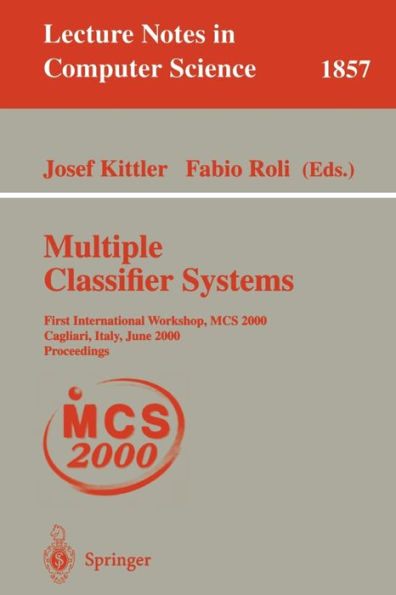5
1
9783540677048


Multiple Classifier Systems: First International Workshop, MCS 2000 Cagliari, Italy, June 21-23, 2000 Proceedings / Edition 1 available in Paperback

Multiple Classifier Systems: First International Workshop, MCS 2000 Cagliari, Italy, June 21-23, 2000 Proceedings / Edition 1
- ISBN-10:
- 3540677046
- ISBN-13:
- 9783540677048
- Pub. Date:
- 07/26/2000
- Publisher:
- Springer Berlin Heidelberg
- ISBN-10:
- 3540677046
- ISBN-13:
- 9783540677048
- Pub. Date:
- 07/26/2000
- Publisher:
- Springer Berlin Heidelberg
54.99
In Stock

Product Details
| ISBN-13: | 9783540677048 |
|---|---|
| Publisher: | Springer Berlin Heidelberg |
| Publication date: | 07/26/2000 |
| Series: | Lecture Notes in Computer Science , #1857 |
| Edition description: | 2000 |
| Pages: | 408 |
| Product dimensions: | 6.10(w) x 9.25(h) x 0.03(d) |
From the B&N Reads Blog
